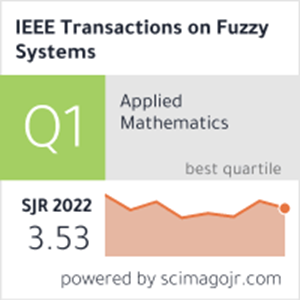高维数据回归问题的层次模糊拓扑系统
IF 11.9
1区 计算机科学
Q1 COMPUTER SCIENCE, ARTIFICIAL INTELLIGENCE
引用次数: 0
摘要
由于特征之间的强非线性、过多的中间变量和规则爆炸等因素,高维数据回归提出了重大挑战,这些因素都阻碍了模型捕获复杂特征的能力,并达到低回归精度。本文提出了一种基于层次模糊拓扑系统(HFTS)的高维数据回归方法。高频高频交易系统采用模块化设计,每层由一个独立的模糊逻辑系统组成,可根据特征分布和输出需求灵活操作。它利用基于图神经网络的分层特征分类方法对高维数据进行分组,将特征映射到节点中,并基于相似度建立边缘。该过程创建了一个拓扑结构,通过邻域聚合促进高密度特征表示。HFTS引入了跨层规则共享机制和插值扩展算法来平滑模糊规则,从而降低了交互复杂度。此外,自适应权值调整策略动态优化特征重要性,提高鲁棒性和预测精度。当应用于11个KEEL回归数据集时,HFTS显示出卓越的准确性,有效地解决了高维交互,同时保持了可解释性和性能之间的平衡。本文章由计算机程序翻译,如有差异,请以英文原文为准。
Hierarchical Fuzzy Topological System for High-Dimensional Data Regression Problems
High-dimensional data regression presents significant challenges due to factors such as strong nonlinearity among features, an excessive number of intermediate variables, and rule explosion, all of which hinder the model's ability to capture complex features and achieve low regression accuracy. This article proposes a method for high-dimensional data regression using a hierarchical fuzzy topological system (HFTS). The HFTS adopts a modular design, where each layer consists of an independent fuzzy logic system, enabling flexible operation based on feature distribution and output requirements. It utilizes a graph neural network based hierarchical feature classification approach to group high-dimensional data, mapping features into nodes and establishing edges based on similarity. This process creates a topological structure that facilitates high-density feature representation through neighborhood aggregation. HFTS introduces a cross-layer rule-sharing mechanism and an interpolation expansion algorithm to smooth fuzzy rules, thereby reducing interaction complexity. Additionally, an adaptive weight adjustment strategy dynamically optimizes feature importance, enhancing both robustness and predictive accuracy. When applied to eleven KEEL regression datasets, HFTS demonstrates superior accuracy, effectively addressing high-dimensional interactions while maintaining a balance between interpretability and performance.
求助全文
通过发布文献求助,成功后即可免费获取论文全文。
去求助
来源期刊

IEEE Transactions on Fuzzy Systems
工程技术-工程:电子与电气
CiteScore
20.50
自引率
13.40%
发文量
517
审稿时长
3.0 months
期刊介绍:
The IEEE Transactions on Fuzzy Systems is a scholarly journal that focuses on the theory, design, and application of fuzzy systems. It aims to publish high-quality technical papers that contribute significant technical knowledge and exploratory developments in the field of fuzzy systems. The journal particularly emphasizes engineering systems and scientific applications. In addition to research articles, the Transactions also includes a letters section featuring current information, comments, and rebuttals related to published papers.
 求助内容:
求助内容: 应助结果提醒方式:
应助结果提醒方式:


